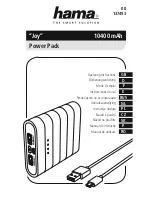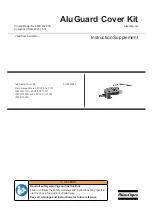
ENGLISH
en
9
Original instructions
We declare under our sole responsibility: These
compressed air chipping hammers, identified by
type and serial number *1), comply with all relevant
requirements of the directives *2) and standards
*3). Technical file at *4) - see page 3.
This air tool is designed for professional mortising
work in masonry and stone, separation of metal
sheets, knocking off rivets or jammed screws,
breaking open jammed nuts or driving out bolts or
pins.
The tool must only ever be operated with a com-
pressed air supply. The maximum supply pressure
specified on the air tool must never be exceeded.
The air tool must not be operated using explosive,
inflammable or hazardous gases. It must not be
used as a lever, crushing tool or striking tool.
Any other use does not comply with the intended
purpose. Unspecified use, modification of the air
tool or use of parts that have not been tested and
approved by the manufacturer can cause unfore-
seeable damage.
The user bears sole responsibility for any damage
caused by improper use.
Generally accepted accident prevention regula-
tions and the enclosed safety information must be
observed.
For your own protection and for the
protection of your air tool, pay attention to
all parts of the text that are marked with
this symbol!
WARNING
– Reading the operating instruc-
tions will reduce the risk of injury.
WARNING Read all safety warnings and
instructions.
Failure to follow all safety warn-
ings and instructions may result in electric shock,
fire and/or serious injury.
Keep all safety instructions and information for
future reference.
Pass on your air tool only together with these docu-
ments.
- The user or the user's employer must evaluate the
specific risks associated with each application of
the tool.
- The Safety Instructions must be read and under-
stood before installing, operating, repairing or
maintaining the tool, and also before replace any
accessory parts or carrying out any work in the
vicinity of the air tool. Failure to read and follow the
instructions may lead to serious injury.
- Only qualified, trained operators are authorised to
install, adjust or use the air tool.
- The air tool must not be modified. Any modifica-
tions may reduce the efficiency of the safety
measures and increase risks for the operator.
- Never use air tools that have been damaged. Look
after your air tools carefully. Regularly check that
all moving parts are functioning correctly without
jamming, ensure that no parts are broken or
damaged to an extent that they affect the opera-
tion of the air tool. Check that all signs and labels
are legible and intelligible. Have damaged parts
repaired or replaced before using the tool. Many
accidents are caused by poorly maintained air
tools.
4.1 Risks associated with ejected parts
- Disconnect the air tool from the compressed air
supply before replacing the accessory or acces-
sory parts, and also before carrying out repairs or
settings.
- If either the workpiece, accessory parts or the air
tool breaks, parts may be ejected at high speed.
- While operating, maintaining or repairing the air
tool, or replacing accessory parts, you must
always wear impact-resistant safety goggles. The
degree of protection required for each individual
task must be evaluated separately in each case.
- Wear a safety helmet if carrying out work above
your head. Also ensure that no other people are
placed at risk.
- Ensure that the workpiece is secure.
- Only switch on the air tool after the application tool
has been locked correctly in the air tool with the
locking device.
- To avoid injury, all parts of the locking device
displaying signs of wear, or that are broken or
bent, must be replaced.
- Place the tool firmly on the surface to be worked
on before switching on the air tool.
4.2 Risks during operation
- When using the air tool, the operator's hands may
be exposed to potential risk of impacts, cuts, abra-
sions and heat. To protect your hands, wear suit-
able gloves.
- The operator and maintenance staff must be
physically capable of handling the size, weight
and power output of the air tool.
- Make sure you hold the air tool correctly: Be
prepared to counter any standard or unexpected
movements, so keep both hands ready.
- Ensure you stand in a safe position and keep your
balance at all times.
- Avoid accidental operation. If the air supply is
interrupted, switch off the air tool using the On/Off
switch.
- Only use lubricants that have been recommended
by the manufacturer.
- Avoid any direct contact with the accessory both
during and after use because it may be hot or have
sharp edges.
- Wear personal protective equipment and always
wear safety glasses. By wearing personal protec-
1. Declaration of Conformity
2. Specified Use
3. General safety instructions
4. Special Safety Instructions










































